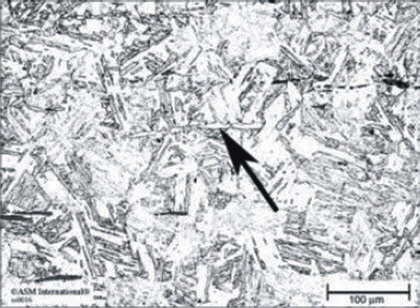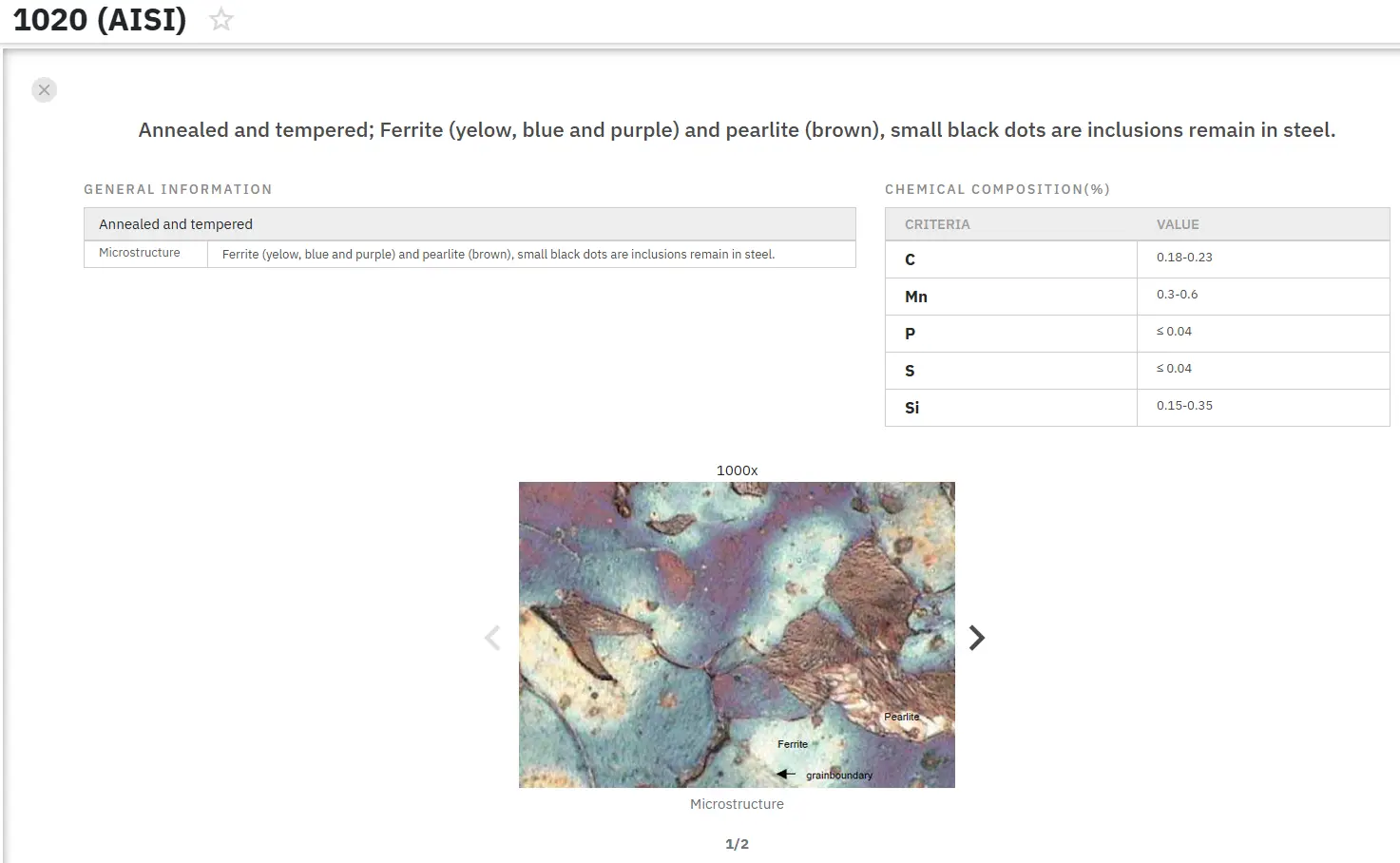Semi-Austenitic Stainless Steels
Abstract
Semi-austenitic stainless steels represent one of three precipitation hardening stainless steel categories, alongside martensitic and austenitic variants. These high-strength alloys combine exceptional mechanical properties with superior corrosion resistance through specialized heat treatment processes. Key characteristics include outstanding strength-to-weight ratios, high toughness, and excellent corrosion resistance, though they exhibit reduced fracture toughness under high-strength conditions and subzero temperatures. The most common grade, 17-7PH stainless steel, serves as a premium spring material for temperatures up to 590K. These precipitation-strengthened alloys find extensive applications in aerospace, nuclear, and mechanical component industries. Their unique microstructure, containing both martensitic and austenitic phases, provides enhanced stress corrosion resistance compared to conventional austenitic grades while maintaining excellent formability in various product forms.
Introduction to Precipitation Hardening Stainless Steel Classifications
Precipitation hardening stainless steels encompass three distinct metallurgical categories: martensitic, austenitic, and semi-austenitic (also known as metastable austenitic) grades. Each classification offers unique combinations of mechanical properties and corrosion resistance characteristics tailored to specific industrial applications.
Semi-austenitic stainless steels distinguish themselves as precipitation-strengthened alloys capable of achieving diverse mechanical properties through controlled heat treatment processes. These advanced materials deliver an exceptional combination of high strength, superior toughness, and reliable corrosion resistance, making them indispensable for demanding engineering applications.
However, semi-austenitic stainless steels present certain limitations, including reduced fracture toughness when processed to high-strength conditions and diminished performance at subzero temperatures. Understanding these characteristics proves essential for proper material selection and application design.
Chemical Composition and Metallurgical Characteristics
Semi-austenitic stainless steels represent specialized variants of conventional austenitic stainless steels, incorporating alloying elements typically not associated with standard austenitic compositions. The most significant addition involves aluminum, which plays a crucial role in precipitation hardening mechanisms and microstructural development.
Table 1.Approximate composition specification ranges for several common semi-austenitic stainless steels
| UNS No | Common Name (AISI No) | Fe | Cr | Ni | Mo | Al | Mn | Si | C | Other |
| S17700 | 17-7PH (Type 631) | Bal | 16.00–18.00 | 6.50–7.75 | — | 0.75–1.50 | 1.00 max | 1.00 max | 0.09 max | 0.040 max P; 0.040 max S |
| S15700 | PH15-7Mo (Type 632) | Bal | 14.00–16.00 | 6.50–7.75 | 2.00–3.00 | 0.75–1.50 | 1.00 max | 1.00 max | 0.09 max | 0.04 max P; 0.03 max S |
| S14800 | PH14-8Mo | Bal | 13.75–15.00 | 7.75–8.75 | 2.00–3.00 | 0.75–1.50 | 1.00 max | 1.00 max | 0.05 max | 0.015 max P; 0.010 max S |
| S35000 | AM-350 (Type 633) | Bal | 16.00–17.00 | 4.00–5.00 | 2.50–3.25 | - | 0.50–1.25 | 0.50 max | 0.07–0.11 | 0.07–0.13 N; 0.040 max P; 0.030 max S |
| S35500 | AM-355 (Type 634) | Bal | 15.00–16.00 | 4.00–5.00 | 2.50–3.25 | - | 0.50–1.25 | 0.50 max | 0.10–0.15 | 0.07–0.13 N; 0.040 max P; 0.030 max S |
The unique chromium-nickel ratio in these alloys prevents complete austenitic phase formation, resulting in a mixed microstructure containing both martensitic and austenitic components. This dual-phase structure contributes significantly to the enhanced mechanical properties and stress corrosion resistance characteristics that distinguish semi-austenitic grades from their fully austenitic counterparts.
Semi-Austenitic Stainless Steel Applications in Modern Industry
Aerospace and Space Industry Applications
Precipitation hardening stainless steels were originally developed specifically for aerospace and space industry requirements, where exceptional strength-to-weight ratios and corrosion resistance prove critical for component reliability and safety. Today, these advanced materials are available in comprehensive product ranges including bars, wires, plates, and sheets, enabling diverse manufacturing applications.
Contemporary applications for precipitation hardening stainless steels span multiple industrial sectors, with primary uses including precision mechanical components, high-performance turbine blades, and specialized nuclear waste containment systems. Each application leverages the unique combination of strength, toughness, and corrosion resistance that characterizes these advanced alloy systems.
17-7PH Stainless Steel: Premium Spring Material Applications
Semi-austenitic stainless steel grade 17-7PH exemplifies the advanced capabilities of precipitation hardening alloys, containing both martensitic and austenitic microstructural components. This carefully balanced composition prevents complete austenitic phase formation while delivering exceptional corrosion resistance and significant mechanical strength properties.
The development of 17-7PH stainless steel specifically targeted applications requiring superior stress corrosion resistance combined with high mechanical strength. This grade commonly serves as a premium spring material for applications involving temperatures as high as 590K, where conventional spring steels would experience performance degradation or failure.
Microstructural Development and Heat Treatment Processing
The microstructural characteristics of semi-austenitic stainless steels result from carefully controlled heat treatment sequences designed to optimize precipitation hardening mechanisms. A typical processing sequence involves multiple temperature exposures and controlled cooling rates to achieve desired property combinations.

Figure 1: Microstructure of 17-7PH steel processed through a specific heat treatment sequence
Figure 1 above shows the characteristic stringer of delta ferrite within the austenitic matrix, demonstrating the complex microstructural relationships that develop during processing.
The standard heat treatment sequence includes solution annealing at 1065°C, followed by a 955°C hold for 10 minutes with air cooling, subzero treatment at -75°C for 8 hours with subsequent air heating to room temperature, and final aging at 510°C for 60 minutes with air cooling. This complex thermal processing develops the optimal balance of strength, toughness, and corrosion resistance.
Hydrogen Environment Performance and Limitations
Limited data exists regarding semi-austenitic stainless steel performance in gaseous hydrogen environments, though available research indicates significant sensitivity to hydrogen-assisted fracture mechanisms. This characteristic represents a common limitation among high-strength alloy systems exposed to hydrogen-rich environments.
Notched tensile test results demonstrate that semi-austenitic stainless steels exhibit essentially no resistance to fracture in hydrogen environments. Indeed, these alloys appear among the most susceptible families to hydrogen-assisted fracture phenomena. Based on current data, semi-austenitic stainless steels are not recommended for stress-bearing components in hydrogen gas applications.
Powder Metallurgy Applications and Processing Considerations
Despite their exceptional high-strength capabilities, precipitation hardening stainless steels have experienced limited adoption in powder metallurgy applications. The strengthening mechanisms in these alloys rely on controlled additions of elements such as copper and niobium, which form beneficial intermetallic precipitates during controlled aging processes.
The precipitation hardening grades demonstrate corrosion resistance levels comparable to those achieved by chromium-nickel (300 series) austenitic grades, while providing significantly enhanced mechanical properties through their specialized microstructural development. This combination makes them valuable for applications requiring both corrosion resistance and high strength characteristics.
Industrial Manufacturing and Product Forms
Modern semi-austenitic stainless steel production encompasses a wide range of product forms designed to meet diverse industrial requirements. Available forms include precision bars for machined components, specialized wires for spring applications, heavy plates for structural uses, and thin sheets for formed components.
The versatility of these materials in various product forms stems from their excellent hot and cold working characteristics, combined with the ability to achieve final properties through post-forming heat treatment processes. This flexibility enables manufacturers to optimize both processing efficiency and final component performance.
Conclusion
Semi-austenitic stainless steels represent advanced metallurgical solutions for applications demanding exceptional combinations of strength, toughness, and corrosion resistance. While certain limitations exist, particularly regarding fracture toughness at high strength levels and hydrogen environment compatibility, these materials continue serving critical roles in aerospace, nuclear, and precision mechanical applications.
The ongoing development of processing techniques and alloy compositions ensures that semi-austenitic stainless steels will remain important engineering materials for demanding applications requiring reliable performance under challenging service conditions. Their unique combination of properties, achieved through sophisticated precipitation hardening mechanisms, positions them as essential materials for advanced industrial applications.
Find Instantly Thousands of Metallography Diagrams!
Total Materia Horizon contains a unique collection of metallography images across a large range of metallic alloys, countries, standards and heat treatments.

Get a FREE test account at Total Materia Horizon and join a community of over 500,000 users from more than 120 countries.